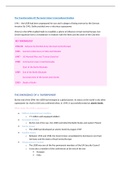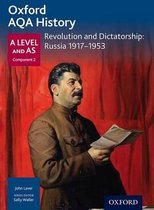Lecture notes
AQA A level History Depth Study Notes - Russia: International Relations 1945-53 & The Death of Stalin
Great, detailed notes on international relations in the final years of Stalin's reign and his death. Notes include: - The Transformation Of The Soviet Union’s International Position - Formation of a Soviet Bloc - The Breakdown of East-West Relations - Death of Stalin - Problems for Stalin'...
[Show more]





